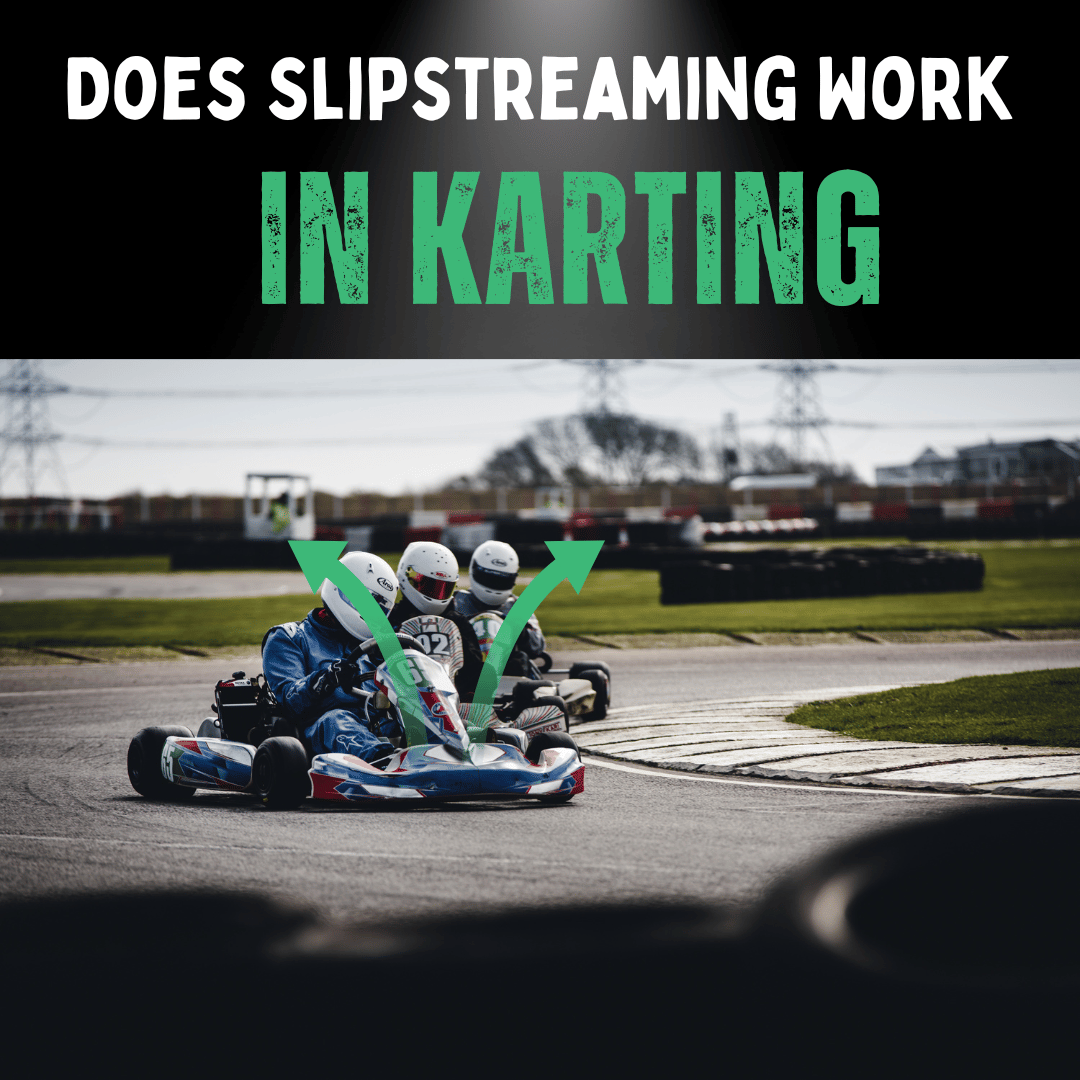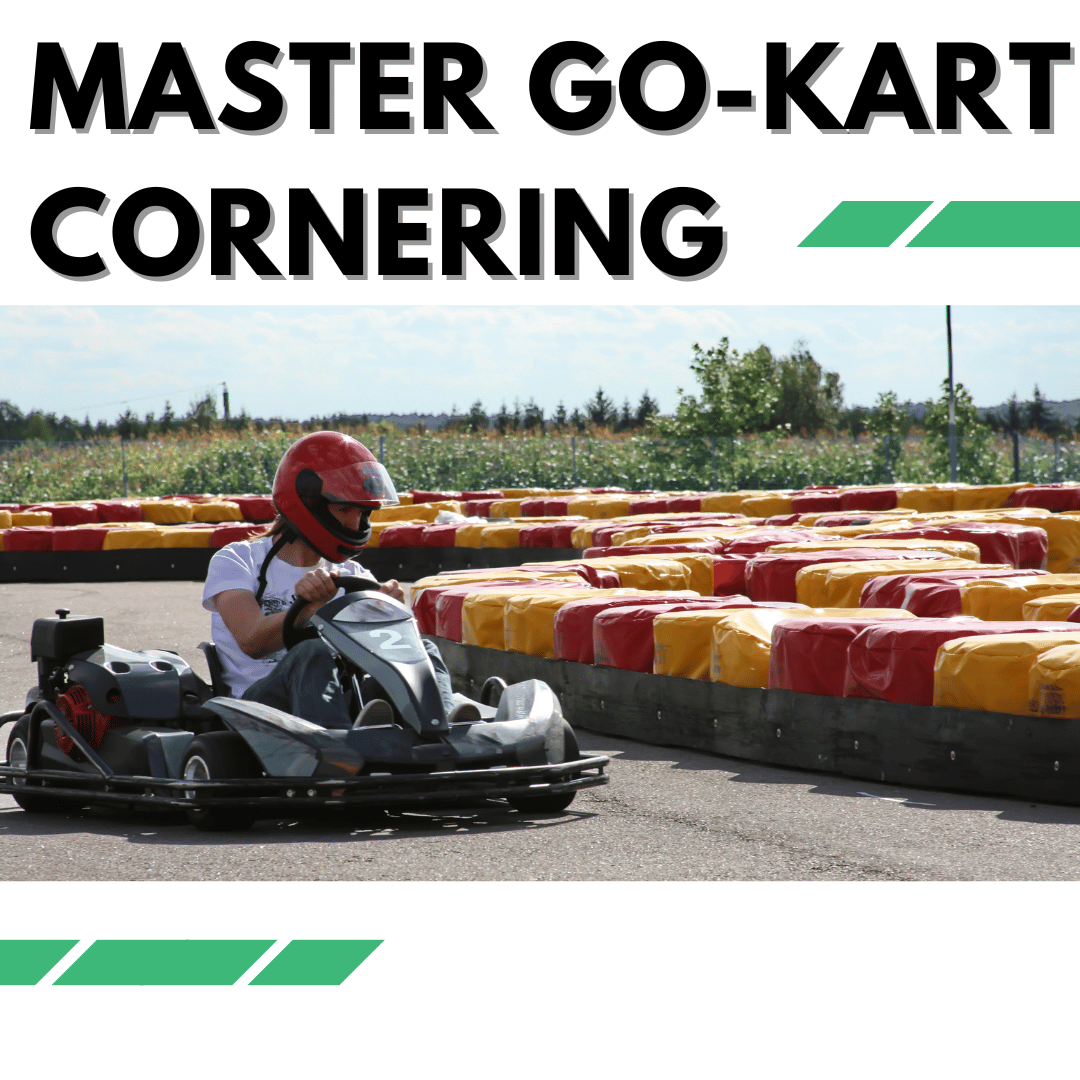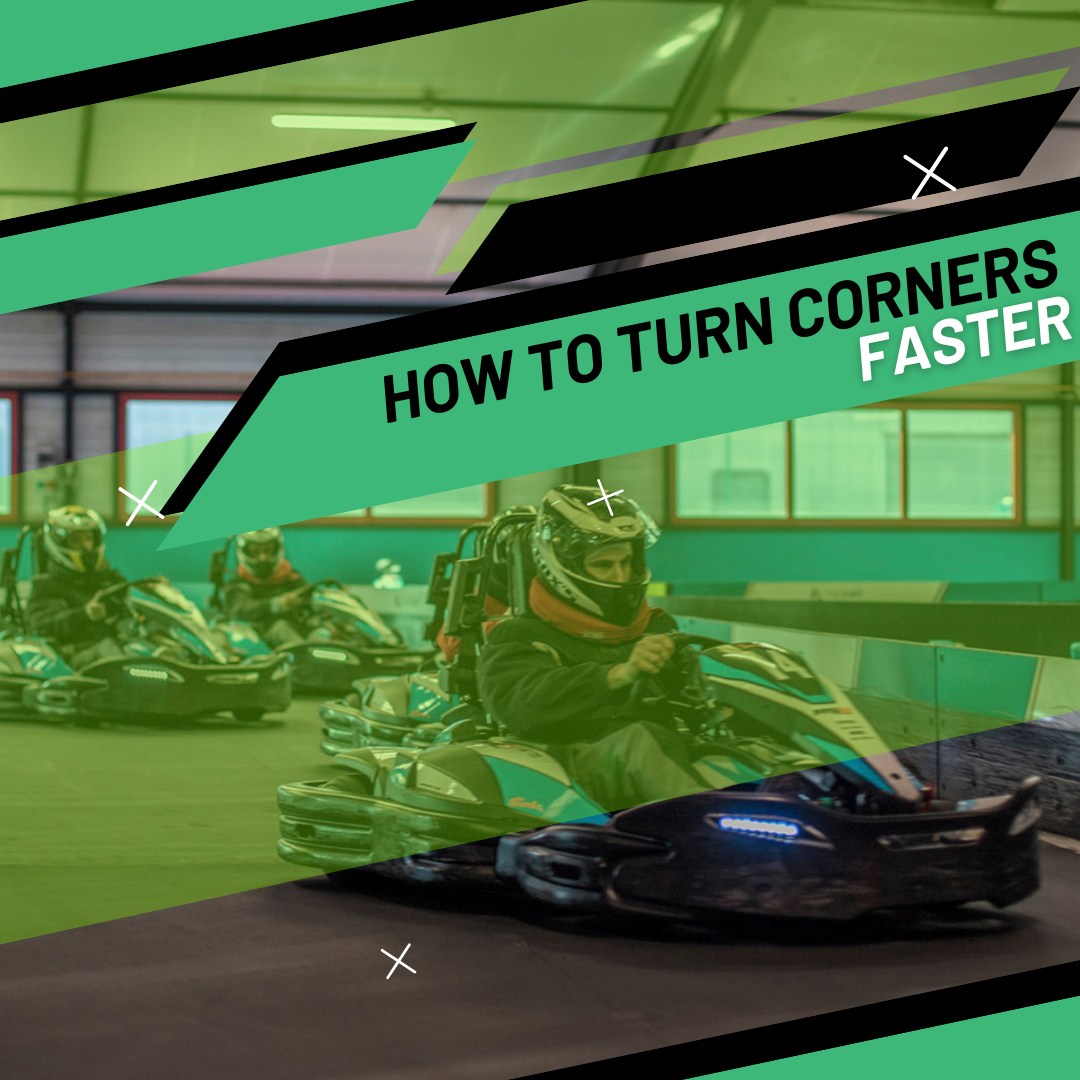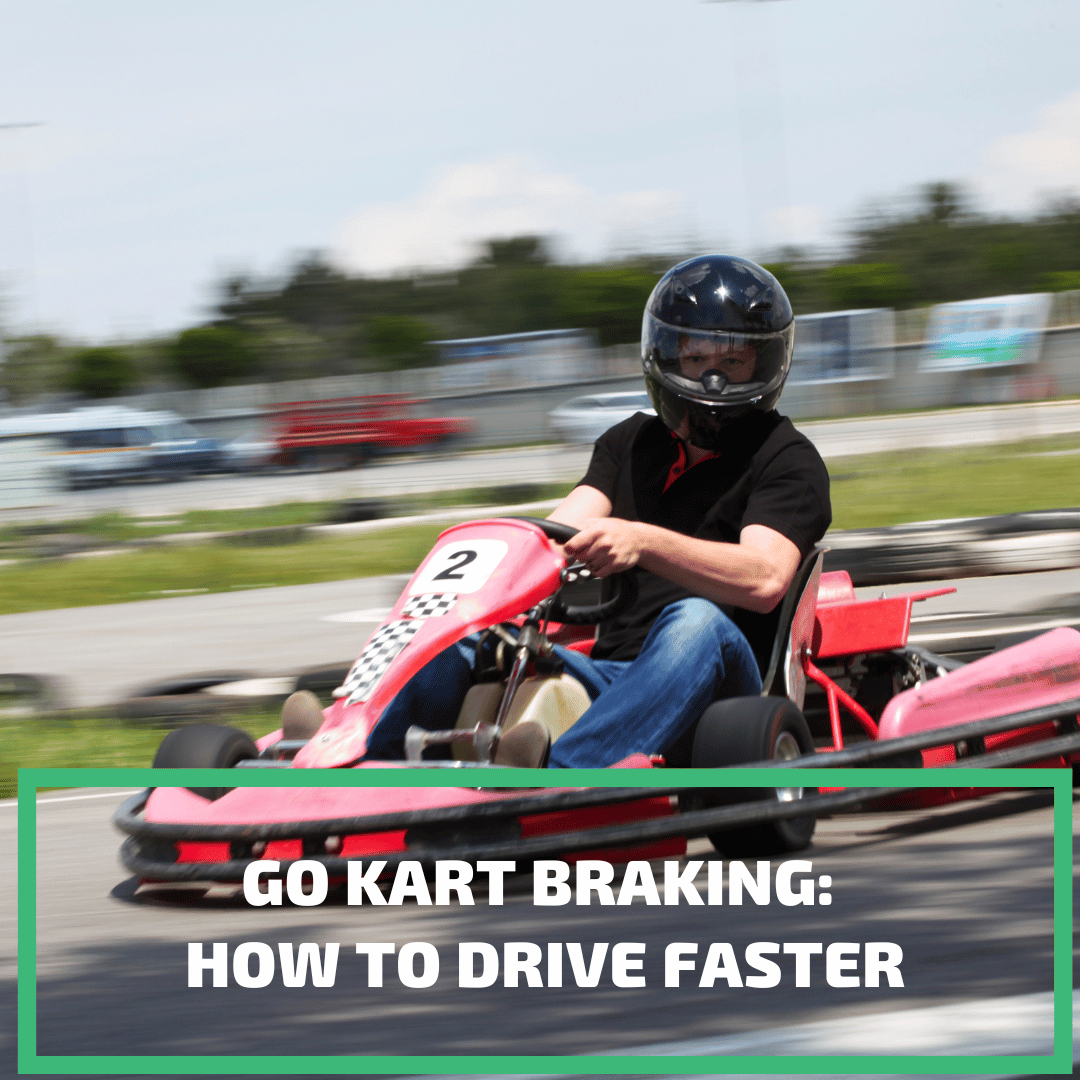
Ever watched a kart race and noticed how racers seem to tailgate each other, especially on straight stretches?
It's not just about intimidation or staying close. It's a strategic move called slipstreaming, which is one of the top go-kart strategies to transform your skills.
But does it really work in karting?
Does Slipstreaming Work In Karting?
Absolutely! Slipstreaming, or drafting, is a technique racers use on the racetrack to gain speed by closely following another kart. This strategy reduces air resistance, allowing the kart in the slipstream to move faster. It's especially effective in straight sections of a track, helping racers make significant gains.
The History of Slipstreaming
Origins in Motorsports
Slipstreaming isn't a new concept. Its origins can be traced back to the early days of motorsports on various race circuits.
Racers, even in the nascent stages of car racing, quickly realised the benefits of tailing closely behind competitors.
This technique allowed them to conserve energy and fuel, and strategically execute overtakes when the time was right.
Slipstreaming's Evolution in Karting
As karting emerged as a popular motorsport, the principles of slipstreaming naturally found their way onto the kart tracks.
Drivers adapted this maneuver to the unique dynamics of kart racing, making it an integral part of their overtaking guide.
Understanding the Basics of Slipstreaming
What is Slipstreaming?
Slipstreaming, often referred to as drafting, is a move where a kart (or any vehicle) follows closely behind another, capitalising on the reduced air resistance in the wake of the leading kart.
It's a method that requires keen awareness and the right passing ability.
It's a method that requires keen awareness and the right passing ability.
How Does It Work?
Imagine you're cycling against a strong wind. Tough, right?
Now, imagine cycling behind a friend who's blocking the wind for you. Easier?
That's the basic principle of slipstreaming. The leading pilot takes the brunt of the air resistance, creating a 'slipstream' or 'draft' for the kart behind.
The Science Behind Slipstreaming
The Role of Air Resistance
Air resistance, or drag, plays a significant role in racing. As a kart moves forward, it pushes air molecules out of its way, creating resistance.
This is why understanding how to drive a go-kart in the wet can be crucial, as wet conditions can change air resistance dynamics.
The faster you go, the more resistance you face.
The Vacuum Effect
The leading kart, while pushing through the air, creates a partial vacuum behind it.
This vacuum means there's less air resistance for the following kart.
By positioning itself in this 'slipstream', the kart behind can achieve higher speeds with the same energy output.
Factors Affecting the Efficiency of Slipstreaming
Kart Design and Aerodynamics
Not all karts are created equal. The design and aerodynamics of a karting vehicle can significantly influence its overtaking skill.
Karts with sleeker designs and better aerodynamics can create a more pronounced vacuum effect, making it easier for following karts to slipstream and achieve the perfect overtake.
Weight and Power
The weight of a racing kart and its power output can also play a role.
Heavier karts might find it harder to gain the full benefits of slipstreaming, while those with a higher power-to-weight ratio can capitalise on the draft more effectively, increasing their speed and rapidity on the track.
Track Conditions and Weather
The state of the race circuit and the prevailing weather conditions can influence slipstreaming.
On a wet track, for instance, slipstreaming might be riskier due to reduced grip.
Similarly, strong crosswinds can disrupt the vacuum effect, making slipstreaming less effective.
Related: Qualifying vs Race Pace in Karting
Implementing Slipstreaming in Karting
When to Use Slipstreaming
Slipstreaming is most effective on straight sections of a race track.
Here, the following kart can maximise the benefits of reduced air resistance, potentially overtaking the lead kart using the right racing tips.
The Risks and Rewards
While slipstreaming offers speed advantages, it's not without risks.
Following too closely can lead to collisions if the lead kart brakes suddenly. However, when executed correctly, it can be a game-changer, giving racers a crucial edge.
The Nuances of Overtaking in Karting
Overtaking in karting isn't just about speed and positioning; it's an art that requires a blend of skill, technique, and strategy.
Every corner, be it a turn or a curve, presents an opportunity. But how does one master the overtaking skill?
By understanding the basics of enhancing your go-kart racing performance and adapting to the situation.
Understanding the Racetrack
Every racetrack has its unique challenges. Whether it's a tight corner or a long straight, understanding the track is crucial.
A go-kart might have the velocity and pace, but without the right approach, overtaking can be a challenge.
The Competitor's Mindset
It's not just about your karting vehicle; it's also about understanding your rivals on the track.
Are they defensive drivers or aggressive adversaries? Recognising their strategy and anticipating their actions can give you the edge in executing the perfect overtake.
Defensive Strategies Against Slipstreaming
Recognising the Threat
Awareness is the first line of defence. Regularly checking mirrors and being aware of opponents' positions can help a driver anticipate a slipstreaming attempt.
Breaking the Draft
If you're leading and sense an opponent trying to slipstream, you can employ tactics to 'break the draft'.
This involves changing your racing line or making controlled, unpredictable movements to disrupt the airflow, making it harder for the following racer to stay in the slipstream and execute overtakes with effective braking.
Tips to Master Slipstreaming in Karting
Positioning Your Kart
It's not just about being behind another kart; it's about being in the right spot.
Stay central in the wake of the leading kart to maximise the benefits of the draft.
Knowing the course and every bend or curve can help you anticipate and position yourself better.
Timing is Everything
Overtaking tips suggest that knowing when to pull out of the slipstream and overtake is crucial.
Too early, and you might not have the speed.
Too late, and you might miss your chance. Being familiar with every pathway or trail on the track can give you an edge.
Conclusion: The Power of the Draft
Does Slipstreaming Work In Karting?
Without a doubt, slipstreaming is a racer's secret weapon on the racetrack. It's not just about tailing another kart; it's a strategic blend of science and technique. By harnessing the slipstream, especially on straight sections, racers can make up significant ground and gain a unique advantage. Think of it like a bird drafting behind another in flight, using the power of the draft to soar ahead. So, the next time you're burning rubber on the track, ask yourself: Will you be setting the pace or using the slipstream to swoop in for the lead?
FAQs
How can you collaborate with another driver to maximise slipstreaming benefits?
Collaborating with another driver can be a strategic move in karting. By taking turns leading and following, both drivers can conserve energy and maintain higher speeds. Communication is key; pre-race planning can help determine when and where to switch positions to gain the most advantage from slipstreaming.
Are there situations where slipstreaming might not be the best strategy in karting?
Yes, while slipstreaming offers speed advantages, it's not always the best strategy. In tight corners or technical sections of a track, maintaining a safe distance is crucial. Additionally, if the lead kart is significantly slower or has unstable driving patterns, slipstreaming might be riskier.
Does trail braking have any impact on slipstreaming in karting?
Trail braking is a technique where a driver continues to brake into a corner, rather than completing all braking in a straight line. While it's a separate technique from slipstreaming, it can influence overtaking strategies. If a driver ahead uses trail braking effectively, they might maintain higher cornering speeds, making slipstream-based overtakes more challenging.
Is it advisable to drift while attempting to slipstream in karting?
Drifting in karting can lead to a loss of speed and control. When attempting to slipstream, maintaining a stable and predictable line is crucial. Drifting can disrupt this, making it harder to stay in the slipstream and potentially increasing the risk of collisions.
Get in Touch
Loved our karting insights?
Fancy a pit stop at something a tad smaller?
If your little racer is itching to get behind the wheel, we've got the perfect ride-on toys for them!
Got questions?
Slide into our Live Chat and let's chat! 🚗💨












Share:
What Does "Toe-In" or "Toe-Out" Mean in Karting?
Qualifying vs Race Pace in Karting in 2025